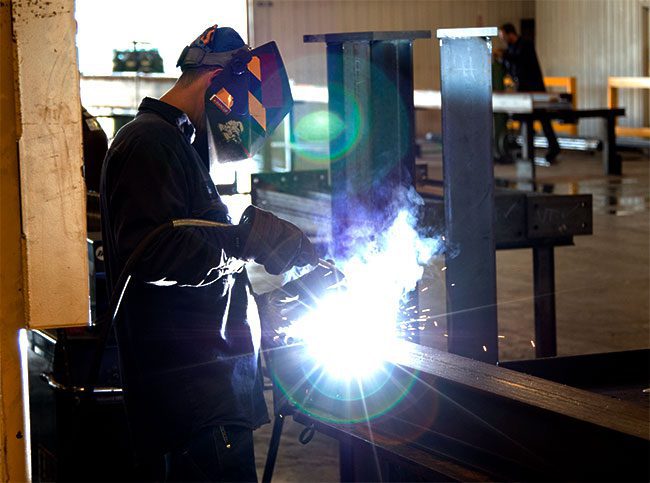Weld Fume Management

When establishing a work environment that is not only compliant but comfortable, weld fume management is non-negotiable. Additionally, it is a valuable component to establishing and maintaining an edge over your competition. The skilled workers that you rely on to help grow your business efficiently and accurately will value the fact that you invest in managing your welding fumes. Ultimately, that is just what welding fume management is; an investment.
It is also a strict necessity when it comes to complying with employment regulation agencies like OSHA. The Occupational Safety and Hazard Administration strictly enforces guidelines stipulating the amounts of exposure employees can have metal oxide, gases, and metal while working in the weld plume. Examples include hexavalent chromium which is toxic and can cause severe health issues such as cancers, chronic disorders, or even death.
Effective Ways to Manage Welding Fumes
There are several options you have when it comes to managing your welding fumes and advancing your company. Using the Hierarchy of Controls, OSHA recommends minimizing weld fume exposure through these steps:
1. Elimination or Substitution, such as using low-manganese filler metals or changing the shielding gas
2. Engineering Controls, such as fume extraction equipment or centralized ventilation
3. Administrative Controls, such as proper body positioning
4. Personal Protective Equipment (PPE), which includes respiratory protection such as half masks, powered air purifying respirators or supplied air respirators
Through out these steps there are additional efforts you can make in order to maximize efficiency, a key component to remaining competitive. Here are five ways that you can effectively manage your welding fumes:
Fume Extraction System Operations
These system operations are a key component to the upholding necessary air quality and safety standards for your employees. In order to get the best results out of these systems, follow these important tips:
Ensure the fume extraction arm is properly attached and positioned.
- This is crucial to the proper removal of the fumes from the workers’ breathing zone.
- If your hood arm or fume extraction arm is a moveable one, confirm it is placed and secured at a 45-degree angle.
- The volume of the air that needs to be captured will determine where you need to position the hood in terms of distance. However, it is usually about 1 1/2 duct diameters away.
Employ Source Capture
- Source capture is the process in which the contaminants are removed directly from their source before they even reach the workers.
- It is considered the most preferred method of fume extraction.
- Source capture devices are available in a variety of shapes and sizes to fit any need.
- The size and shape will be determined by the volume of fumes that need to be extracted from the source.
Limit Cross Ventilation
- Seriously helps the fume extraction arm to function with more efficiency.
- Equally important for maintaining efficient operations to ensure the positioning of the arm is proper as well.
- Cross ventilation can interfere with the ability of the arm to extract the fumes from the source properly, placing workers in more jeopardy.
- As a measure of safety, workers should be positioned so that the airflow of the fumes always reaches them from behind rather that the side or front. This will also help to limit the possibility of exposure.
Properly maintain fume extraction systems regularly.
- Perform regular maintenance to be sure that it operates properly, and efficiently, and that any necessary repairs are tended to.
- It is better to practice prevention than correction when it comes to mechanical systems that handle something as important as these extraction systems.
- Self-cleaning systems and filters are available to help ease on the amount of manual maintenance necessary.
- For these systems, regularly check the airflow production and that the air is both dry and clean.
Select and Use the Proper Respirator
Air-purifying and atmosphere-supplying are the two main types of respiration systems recognized for their level of effectiveness. Each are meant for specific types of working environments and have their own benefits. Regulatory agencies have outlined specific guidelines to measure the permissible exposure limits to help you select the respirator that is right for you. It is also necessary to conduct regular inspections of your respirator systems to detect and correct any potential malfunctions. One of the most important things you can do for your company is to invest in its efficiency and the people that keep it going. Weld fume management isn’t just important, it is crucial.

